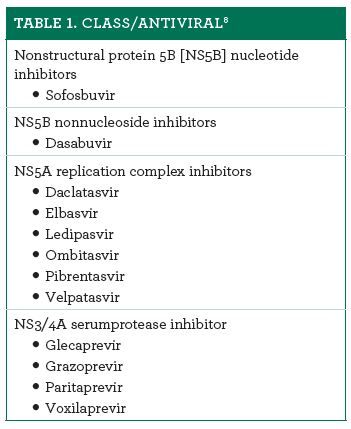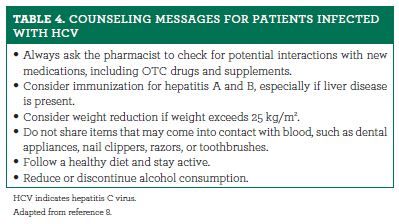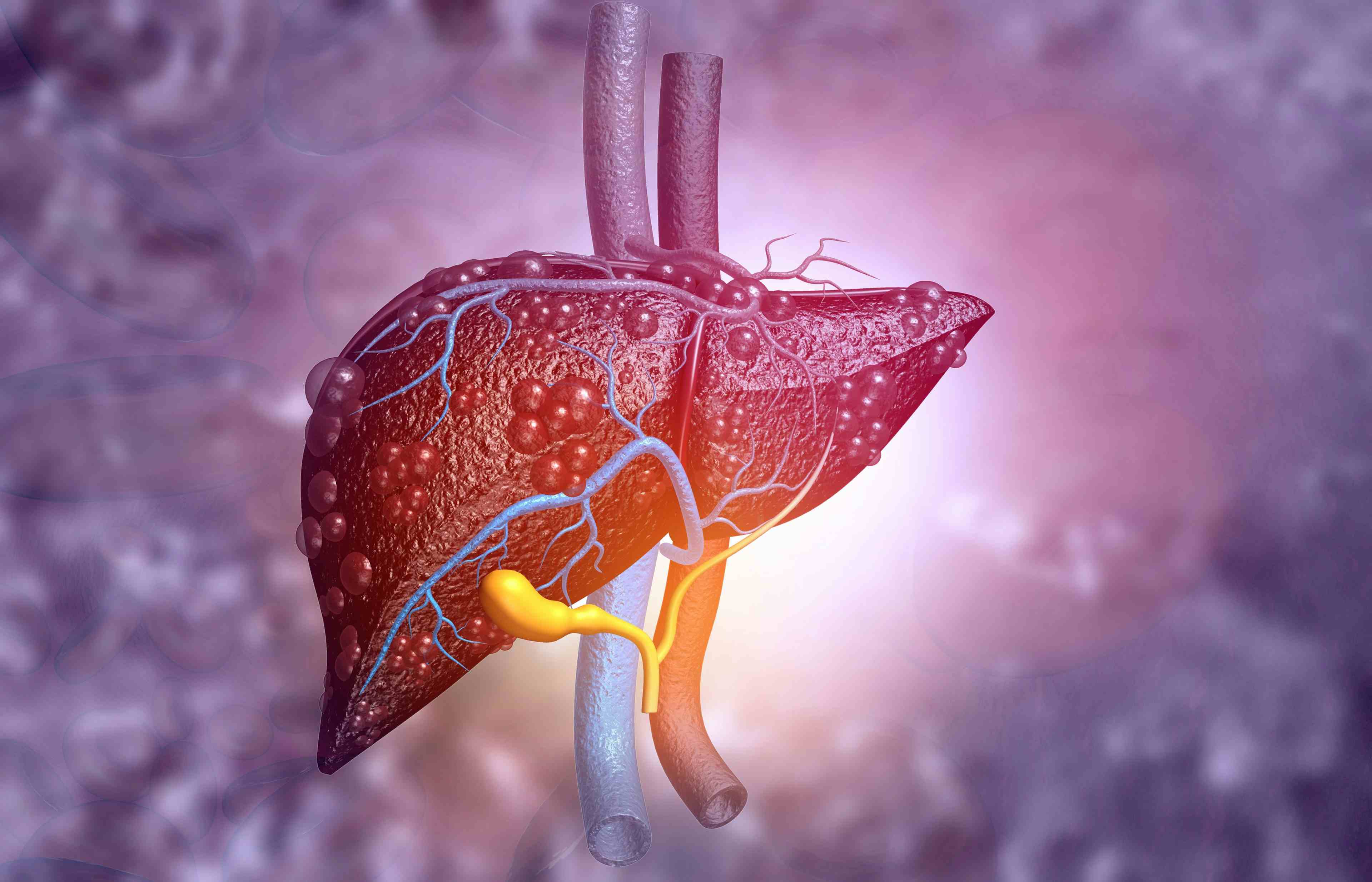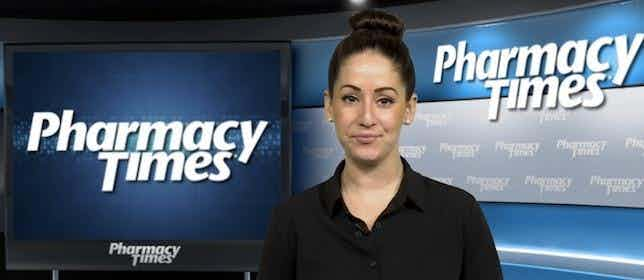Publication
Article
Pharmacy Times
Hepatitis C: The Bane of Baby Boomers, Though Treatable
Author(s):
More than 3 million Americans have chronic hepatitis C virus, and physicians diagnose about 17,000 new cases annually.
More than 3 million Americans have chronic hepatitis C virus (HCV), and physicians diagnose about 17,000 new cases annually. HCV is a silent disease, and most infected individuals are unaware that they are infected until they develop liver damage, cirrhosis, or liver cancer. Consequently, 12,000 Americans die from HCV complications each year.1,2,3 And people born between 1945 and 1965 are 5 times more likely to have hepatitis C than others.4 Although treatments have been available for many years, the consistent ability to cure HCV is recent.
Virulent Virus
HCV virus can be transmitted by blood, occupational exposure, perinatal transfer, and sexual intercourse. Epidemiologists trace 60% of new infections to needle sharing.5 Acutely, HCV causes jaundice, malaise, nausea, and right-upper-quadrant pain for 2 to 12 weeks.1,2,3
Up to 85% of cases become chronic and are usually asymptomatic and slowly progressive. Patients may have anorexia, mild fatigue, and nausea.3 Within 20 years, up to 25% of chronic HCV patients develop cirrhosis, with 5% developing hepatocellular cancer every year.1,2,3
Choosing the Treatment Regimen
Treatment goals include a persistent absence of HCV ribonucleic acid in serum 6 months or more after completing antiviral treatment, and preventing progression to serious complications. Previous regimens included standard dual therapy (pegylated interferon [PEG-IFN] + ribavirin [RBV]) or triple therapy (PEG-IFN + RBV + telaprevir or boceprevir), with cure rates of up to 50% and up to 75%, respectively.2 Since 2013, oral regimens combining direct-acting antivirals from different classes (Table 18) have effectiveness exceeding 90%. These therapies have shorter durations and fewer adverse effects than older options.2,6,7

The Infectious Diseases Society of America and the American Associations for the Study of Liver Diseases, in collaboration with the International Antiviral Society-USA to select treatment revise guideline often (see hcvguidelines.org/contents/welcome), so clinicians must ensure that they use the most recent ones.8
Specialty pharmacies dispense triple therapy. Treatment depends on individual patients’ comorbidities, concurrent medications, laboratory test results, liver involvement, prior treatment and response, and transplant history.8 Assessing for potential interactions is often the most important step. HCV has 6 major genotypes (GTs) and more than 50 minor subtypes. In the United States, GT1 is both the most common and most difficult to treat.2,8 Prescribers need to know the patient’s GT and subtype, viral load, treatment history, and response.8 Generally, the prescriber and the specialty pharmacist choose from the available regimens, and whenever possible, they gravitate to oral and combination products (Table 29-18).

Monitoring Adverse Effects and Adherence
With any regimen, patient adherence is critical, and oral treatment still requires tremendous commitment from patients and support from the health care team.2,8 In addition, the health care team needs to work closely with the patient's insurer or manufacturers’ patient assistance programs, because some regimens cost about $150,000 for a 12-week treatment course.2
Older treatments’ adverse effects (AEs), including anemia, depression, flulike symptoms, and nausea caused many patients to discontinue treatment prematurely. With fewer adverse drug reactions and greater efficacy, the newer treatments are associated with better adherence. However, patients will sometimes experience AEs (Table 33,9-18) and adherence challenges that affect quality of life.19

The Pharmacist’s Role
Patients infected with HCV usually receive some medications and OTC products at their local pharmacies. Pharmacists and pharmacy technicians need to understand HCV, various treatment regimens, and potential drug interactions. In addition, they need to advise patients to take steps to protect their livers from further harm (Table 4).

Conclusion
Community pharmacy staff members become a safety net for individuals infected with HCV, offering empathetic counseling, advice, and alternatives when products that they need or want may interact with their antivirals. Providing this care can help patients complete the entire duration of their antiviral therapy and defeat HCV.
Jeanette Y. Wick, RPh, MBA, FASCP, is a visiting professor at the University of Connecticut School of Pharmacy in Storrs.
References
- Dhawan VK. Hepatitis C. Medscape. emedicine.medscape.com/article/177792-overview. Published March 28, 2016. Assessed December 20, 2017.
- Lynch SM, Wu GY. Hepatitis C virus: a review of treatment guidelines, cost-effectiveness, and access to therapy. J Clin Transl Hepatol. 2016;4(4):310-319. doi: 10.14218/JCTH.2016.00027.
- Wong WW, Lee KM, Singh S, Wells G, Feld JJ, Krahn M. Drug therapies for chronic hepatitis C infection: a cost-effectiveness analysis. CMAJ Open. 2017;5(1):E97-E108. doi: 10.9778/cmajo.20160161.
- CDC. Hepatitis C: why people born from 1945-1965 should get tested. cdc.gov/knowmorehepatitis/media/PDFs/FactSheet-boomers.pdf. Updated 2016. Accessed December 20, 2017.
- U.S. Department of Veterans Affairs. Hepatitis C virus transmission. hepatitis.va.gov/provider/reviews/transmission.asp. Published 2017. Accessed December 20, 2017.
- Asselah T, Marcellin P. Optimal IFN-free therapy in treatment-naïve patients with HCV genotype 1 infection. Liver Int. 2015;35(suppl 1):56-64. doi: 10.1111/liv.12745.
- Petta S, Craxi A. Current and future HCV therapy: do we still need other anti-HCV drugs? Liver Int. 2015;35(suppl 1):4-10. doi: 10.1111/liv.12714.
- Infectious Diseases Society of America. HCV guidance: Recommendations for testing, managing, and treating hepatitis C. hcvguidelines.org/contents/welcome. Updated September 21, 2017. Accessed December 20, 2017.
- Sovaldi [prescribing information]. Foster City, CA: Gilead Sciences, Inc; 2017. gilead.com/~/media/Files/pdfs/medicines/liver-disease/sovaldi/sovaldi_pi.pdf. Accessed December 26, 2017.
- Olysio [prescribing information]. Titusville, NJ: Janssen Therapeutics; 2017. olysio.com/shared/product/olysio/prescribing-information.pdf. Accessed December 26, 2017.
- Harvoni [prescribing information]. Foster City, CA: Gilead Sciences, Inc; 2017. gilead.com/~/media/files/pdfs/medicines/liver-disease/harvoni/harvoni_pi.pdf. Accessed December 26, 2017.
- Viekira [prescribing information]. North Chicago, IL: AbbVie, Inc; 2017. accessdata.fda.gov/drugsatfda_docs/label/2017/208624s001s003lbl.pdf. Accessed December 26, 2017.
- Daklinza [prescribing information]. Princeton, NJ: Bristol-Myers Squibb Co; 2015. accessdata.fda.gov/drugsatfda_docs/label/2017/206843s006lbl.pdf. Accessed December 26, 2017.
- Technivie [prescribing information]. North Chicago, IL: AbbVie, Inc; 2017. accessdata.fda.gov/drugsatfda_docs/label/2015/207931s001lbl.pdf. Accessed December 26, 2015.
- Zepatier [prescribing information]. Whitehouse Station, NJ: Merck & Co, Inc; 2017. accessdata.fda.gov/drugsatfda_docs/label/2017/208261s002lbl.pdf. Accessed December 26, 2017.
- Epclusa [prescribing information]. Foster City, CA: Gilead Sciences, Inc.; accessdata.fda.gov/drugsatfda_docs/label/2016/208341s000lbl.pdf. Accessed December 26, 2017.
- Vosevi [prescribing information]. Foster City, CA: Gilead Sciences, Inc.; accessdata.fda.gov/drugsatfda_docs/label/2017/209195s000lbl.pdf. Accessed December 26, 2017.
- Mavyret [prescribing information]. North Chicago, IL: AbbVie, Inc; 2017. accessdata.fda.gov/drugsatfda_docs/label/2017/209394s000lbl.pdf. Accessed December 26, 2017.
- Rasi M, Künzler-Heule P, Schmid P, et al. “Fighting an uphill battle”: experience with the HCV triple therapy: a qualitative thematic analysis. BMC Infect Dis. 2014;14:507. doi: 10.1186/1471-2334-14-507.





























